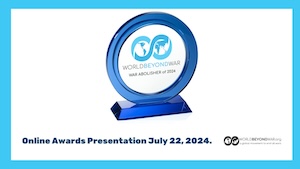Lessons Learned:
1. It is possible for an NGO to put a major issue on the international agenda. An NGO had a formal seat at the table and played a major role in drafting the treaty.
2. Small and medium sized countries provided global leadership and achieved major diplomatic results and were not held back by the superpowers.
3. It is possible to work outside the traditional diplomatic forums such as the UN system and with informal rather than traditional means to achieve success.
4. Through common and concerted action, the process was quick – treaty negotiation within a year and ratified by enough countries within nine months.
Other:
• Partnership Pays. There was close and effective partnership at the strategic and tactical levels.
• Build a Core Group of Like-minded Governments. The campaign called upon individual governments to come together in a self-identifying bloc opposed to landmines. After a long adversarial relationship, an increasing number of governments began to endorse an immediate ban.
• Nontraditional diplomacy can work. The governments decided to pursue a fast-track approach, outside of traditional negotiating forums.
• Say no to consensus. If you were not like-minded on a total ban, do not participate.
• Promote Regional Diversity and Solidarity without Blocs. Avoid traditional diplomatic alignments.
Advantages of the Landmine Ban:
• Focus on a single weapon
• Easy to grasp message
• Highly emotional content
• The weapon was not vital militarily nor important economically
Disadvantages
• The widespread deployment of mines was an integral part of in-place defenses, war plans, training and doctrine and was considered as common and acceptable as bullets.
• Many nations had stockpiles of antipersonnel mines and had been widely used.
• They were considered cheap, low-tech, reliable, a substitute for manpower and a focus for future R&D for richer nations.
What worked for them:
• Clear campaign and goal. We had a simple message and we focused on humanitarian as opposed to disarmament issues. Strong visual images and the support of well-known personalities were used, which helped get the issue in the media.
• Non-bureaucratic campaign structure and flexible strategy. This allowed for speedy decision-making and implementation. They worked outside the UN in the Ottawa process and with the UN when the treaty came into force.
• Effective coalitions. Alliances were built among all participants, facilitated by email personal relationships.
• Favorable international context. The cold war had ended; small states took the lead; governments provided strong leadership and used non-traditional diplomacy.








